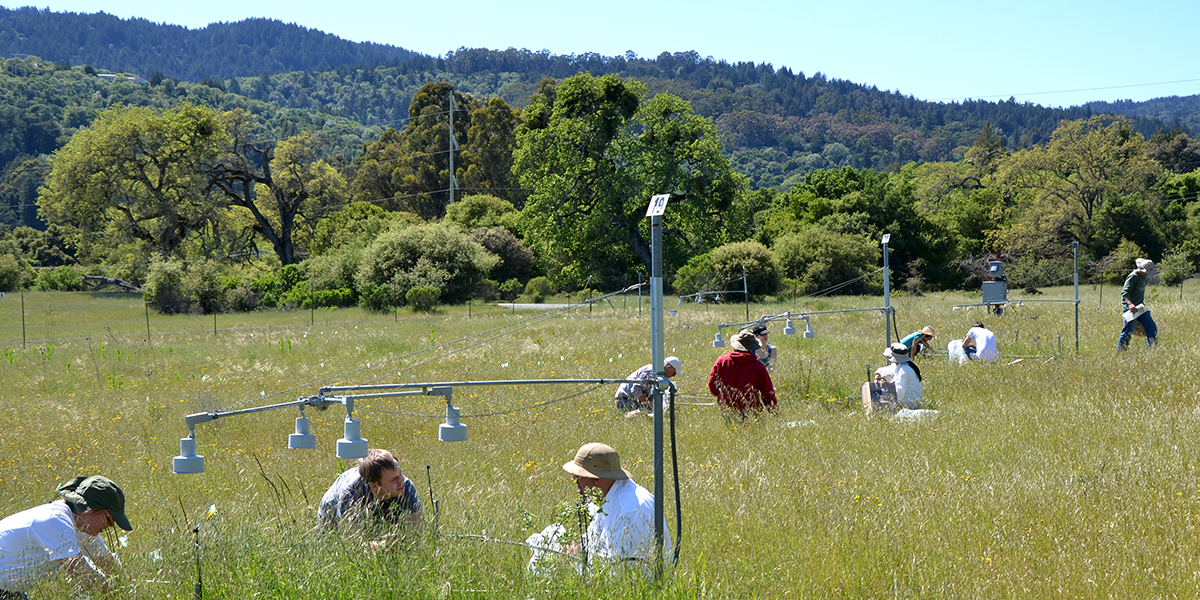Jasper Ridge Global Change Experiment: End of an era
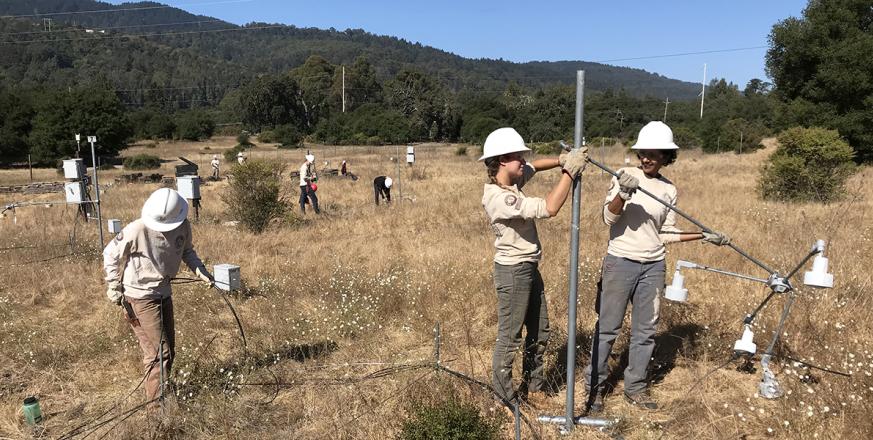
The Jasper Ridge Global Change Experiment (JRGCE), a longterm ecosystem study and landmark at Jasper Ridge, is being dismantled, 21 years after the experiment was set up. Conceived and led by professor Christopher Field, the initial goals were conceptually straightforward—to understand whether the effects of global change that is realistically multi-factor could be predicted by summing the effects of individual global change factors, and to understand the relative roles of plants and soil microbes in driving the response. These goals required an experiment that was operationally complex: an unprecedented number of global change manipulations—increased CO2 concentration, warming, precipitation, and nitrogen inputs—applied in all possible combinations, from single-factor treatments to the complete works. It also required hundreds of sensors, and miles of sensor wires, CO2 delivery and sampling tubes, electrical power and a watering system. In the first phase of decommissioning the experiment, most of the aboveground infrastructure was removed and sorted for maximum recycling by a crew that included a team from the American Conservation Experience (shown above).
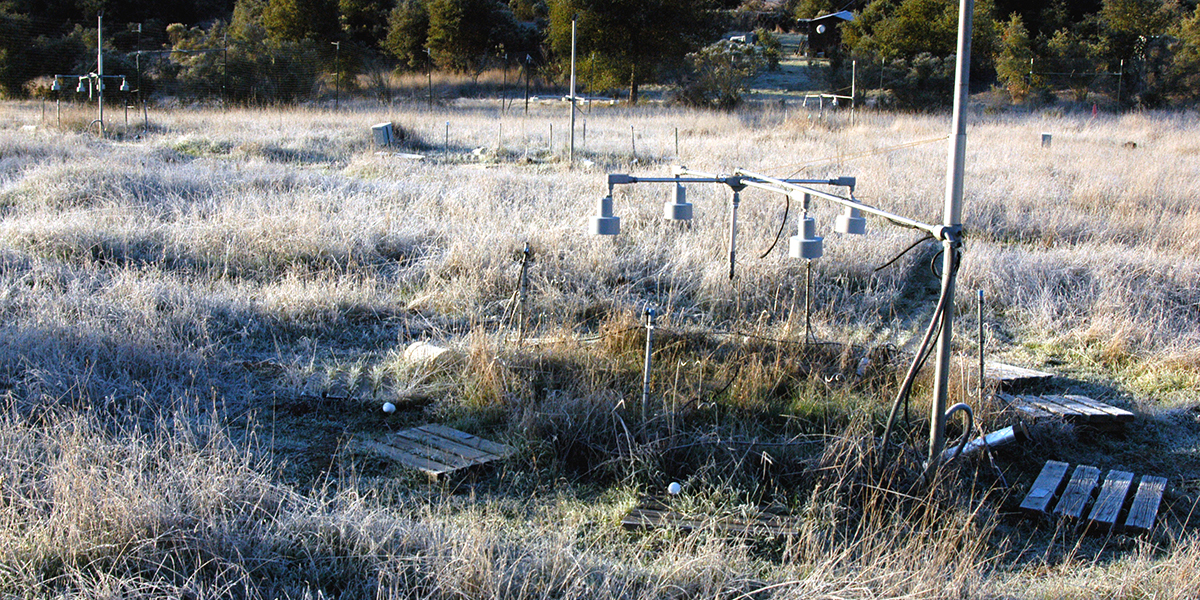
Over its nearly two decades, the JRGCE experienced some of JRBP’s wettest years and some of its driest, a fire that started without warning and a fire that took three years of planning and permitting. Twice the warming treatment was ratcheted up to better match temperature projections for the end of the century. A few effects were strikingly visual, as on frosty mornings when the warmed plots were frost-free islands (shown above), and in early spring when two of the four quadrants in each plot were visibly greener due to simulated nitrogen deposition (shown below).
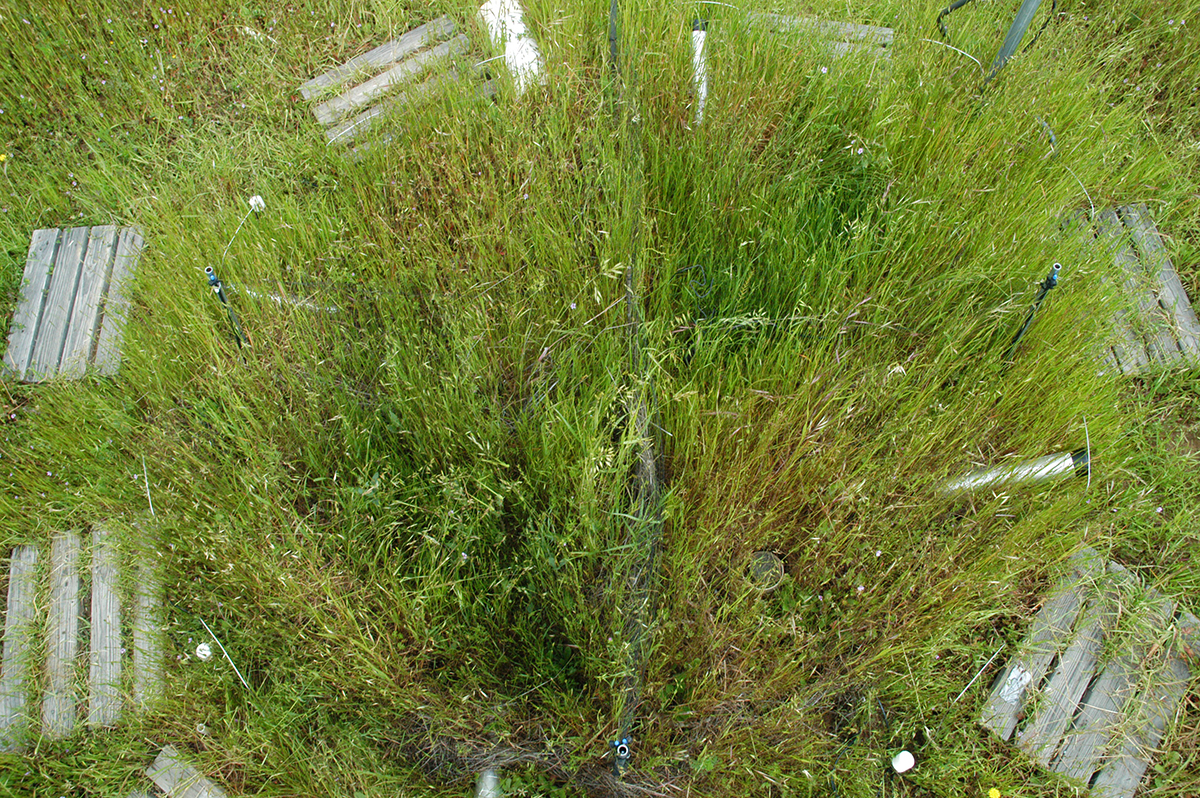
In general the effects of global change factors tended to combine in an additive way, but there were many surprises. Warming increased evaporation and water loss from plants, but plants also grew faster, flowered earlier, and died sooner than in unwarmed plots. This left untapped moisture in the soil of warmed plots at the end of the growing season, so in summer the soil was wetter than in ambient plots, despite warming-driven evaporation. Elevated CO2 increased growth of yellow star-thistle but had little effect on grassland production overall, except in the years immediately following each of the fires. There were post-fire gains in carbon uptake, but they were matched by greater CO2 release from the soil, so net carbon storage did not increase. These are examples of the results in 13 theses and dissertations and 61 scientific publications with 38 different lead authors.
Over the years, the JRGCE included dozens of participants, five co-principal investigators, and a half dozen funders. The data were also shared widely beyond the participants, and contributed to meta-analyses of global change experiments reported in 13 publications. A large local community also benefited, thanks to outreach to school groups and the public by Jasper Ridge docents. More broadly, a bold decision to live-stream video of the prescribed burn in 2011 increased awareness of the relationship between global change and fire, and of the vital partnership between fire agencies and land managers.
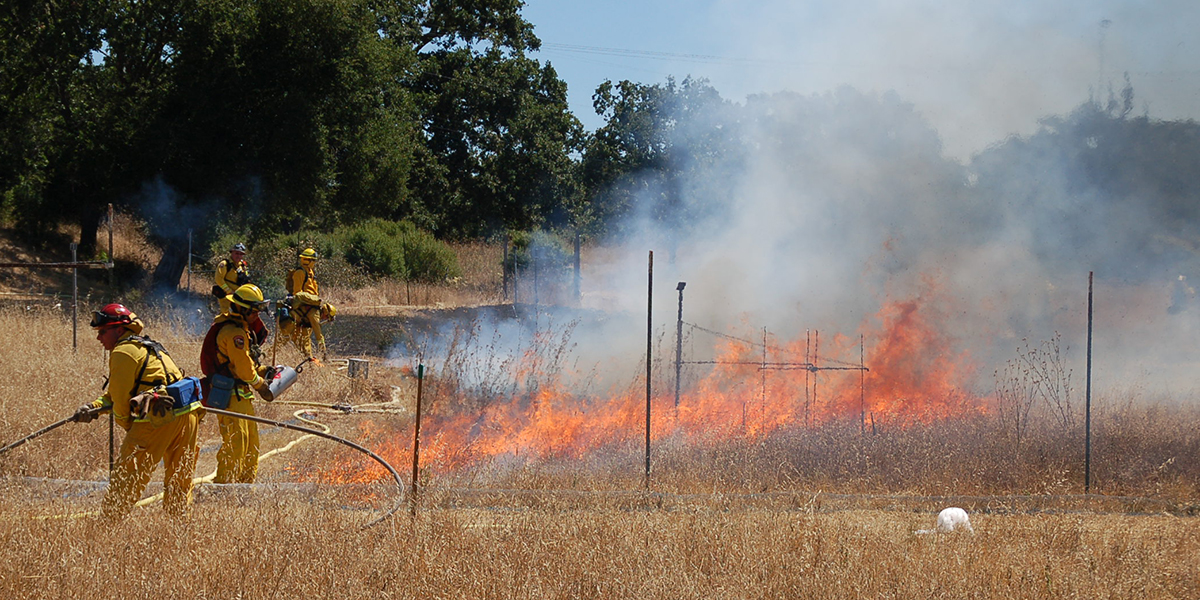
Despite the end of the formal experiment, the work continues in several ways. Three manuscripts that use JRGCE data are in review, and data analysis continues. Of the students and postdocs who participated onsite in the JRGCE, a dozen are now professors taking global change research in new directions.
